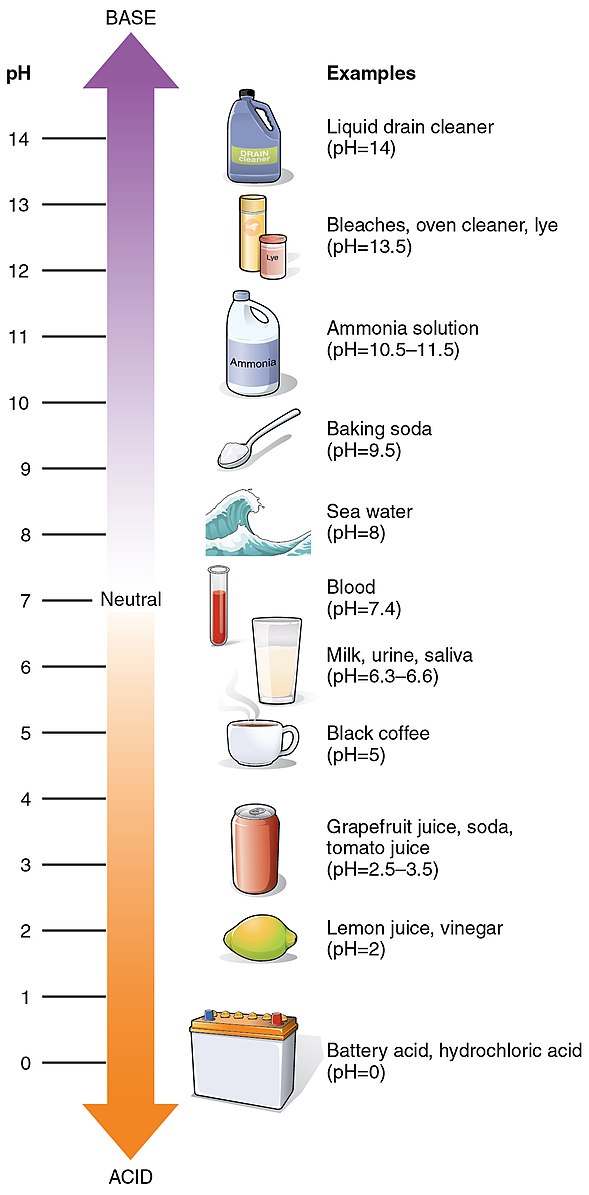The pH value of hydrogen fluoride (HF) in water is less than 7, indicating an acidic solution. This is due to the partial dissociation of HF in water, forming hydronium ions (H3O+) and fluoride ions (F-). Understanding the pH of HF in water is crucial, as it can have significant implications for safety and handling.
Understanding the Dissociation of Hydrogen Fluoride in Water
The dissociation of HF in water can be represented by the following chemical equation:
HF + H2O ⇌ H3O+ + F-
This reaction shows that when HF is dissolved in water, it partially dissociates, releasing hydronium ions (H3O+) and fluoride ions (F-). The concentration of these hydronium ions determines the pH of the solution.
Factors Affecting the pH of Hydrogen Fluoride in Water
 Image source: OpenStax College
Image source: OpenStax College
The pH of a solution containing HF is influenced by several factors:
-
Concentration of HF: The higher the concentration of HF in the water, the more it will dissociate, leading to a lower pH and a more acidic solution.
-
Temperature: The dissociation of HF is temperature-dependent. As the temperature increases, the dissociation of HF may increase, resulting in a lower pH.
-
Presence of other ions: The presence of other ions in the solution, such as metal ions, can affect the pH by forming metal fluoride salts, which can alter the overall acidity of the solution.
Dangers of Hydrogen Fluoride
It is important to note that while HF is a weak acid, it is still extremely dangerous and can cause severe burns and tissue damage. This is because the fluoride ion (F-) can readily absorb through the skin and penetrate deep into body tissues, causing systemic injury.
Handling and Neutralizing Hydrogen Fluoride Solutions
When working with solutions containing HF, it is crucial to take the following precautions:
-
Use appropriate personal protective equipment (PPE): This includes chemical-resistant gloves, goggles, and a face shield.
-
Neutralize the solution: To balance the pH of a solution containing HF, a base can be added to neutralize the acid. However, it is important to carefully control the amount of base added, as adding too much can result in a highly basic solution, which can also be harmful.
-
Proper disposal: Any solutions containing HF or its byproducts must be disposed of in accordance with local regulations and guidelines, as they may contain toxic metal fluoride salts.
Conclusion
The pH of hydrogen fluoride (HF) in water is less than 7, indicating an acidic solution. This is due to the partial dissociation of HF in water, forming hydronium ions and fluoride ions. While HF is a weak acid, it can still cause severe burns and tissue damage due to the ability of the fluoride ion to readily absorb through the skin and penetrate deep into body tissues. When working with HF, it is crucial to handle it with care, use appropriate personal protective equipment, and properly dispose of any solutions containing HF or its byproducts.
References:
– Hydrogen fluoride. (n.d.). American Chemical Society. Retrieved April 27, 2024, from https://www.acs.org/content/acs/en/archive/hydrogen-fluoride.html
– Hydrogen fluoride. (n.d.). Wikipedia. Retrieved April 27, 2024, from https://en.wikipedia.org/wiki/Hydrogen_fluoride
– Hydrogen Fluoride/Hydrofluoric Acid: Systemic Agent. (n.d.). National Institute for Occupational Safety and Health (NIOSH)/Centers for Disease Control and Prevention (CDC). Retrieved April 27, 2024, from https://www.cdc.gov/niosh/ershdb/emergencyresponsecard_29750030.html
